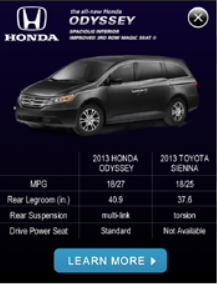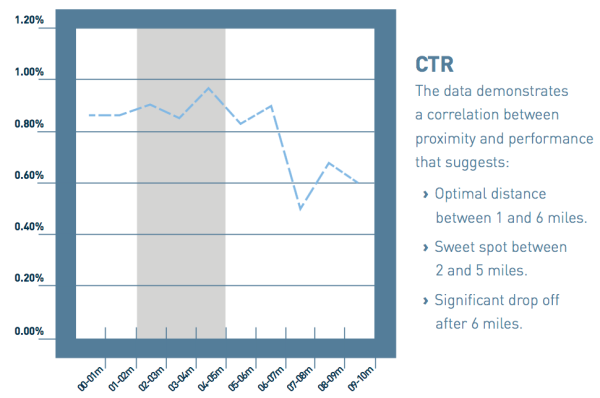Using contextual, offline, location, third-party, and other data can massively improve mobile ad performance. That’s a key finding of a new report on mobile advertising published this week, “Brands and mobile advertising: How to win.”
“It’s both amazing and sobering,” said VB Insight’s John Koetsier, the report’s author. “Brands really have to get their act together on data to be as successful as the mobile-first and mobile-only crowd when it comes to mobile advertising.”
Geotargeting and geofencing boost attention, engagement, and conversion

Above: The mobile ad Honda ran targeting people in Toyota’s lot
Geotargeting is one of the most obvious and effective ways to target mobile ads.
Geolocation can be used to target regions surrounding a physical store (or a store that stocks your product), or to regions surrounding a competitor’s location.
AI Weekly
The must-read newsletter for AI and Big Data industry written by Khari Johnson, Kyle Wiggers, and Seth Colaner.
Included with VentureBeat Insider and VentureBeat VIP memberships.
For example, Honda geoconquested Toyota in an ad promoting the benefits of its Odyssey minivan versus Toyota’s Sienna. The ad was only shown consumers who were browsing apps or the mobile web while in a Toyota car lot.
The result was an average of 20 seconds attention to the ad, and an increase of 377 percent in average foot traffic lift for Honda, according to a study of 125 geolocated ads in the automotive sector.
That’s huge.
VB’s new Brands & Mobile Advertising: How to win report is available for
$499 on VB Insight, or free with your martech subscription
Geofencing campaigns get similar in-store traffic lift, boosting foot traffic by an average of 295 percent.
A geofence is usually not just set up for a region exactly describing a location’s actual footprint, but for a certain amount of distance from the location — usually within 5 miles.
The optimal distance? Between 1 and 6 miles:

Above: Proximity vs performance, from Verve Mobile data
Targeting using third-party data
There are hundreds of targeting variables brand advertisers can take into account when buying mobile advertising, and scores of demographic groups that data management platforms (DMPs) and ad networks can apply to ad buys.
These attributes can be used for ad segmentation, but also to advertise to custom audiences that brands already know. For example, brands may have a list of valuable customers who have bought in the past. They can use that list, anonymized to protect customer identity, to retarget them with ads.
By using a combination of first-party and third-party data, brand advertisers can more finely hone ad targeting than ever before.
Targeting on context
 Device usage patterns and device location history are examples of additional context that is often overlooked.
Device usage patterns and device location history are examples of additional context that is often overlooked.
Koetsier said that while “location data is good, location history over time is better.” He explains that while he was in Berlin, he saw ads for German dental plans, cosmetic services, and other things — all in German, which he does not understand.
Advanced mobile advertisers will incorporate location history into their targeting strategies to avoid wasting dollars this way.
For more targeting strategies, analysis of different mobile ad types, including native, video, and others, case studies, biggest opportunities, and more, read the full report.
VentureBeat's mission is to be a digital town square for technical decision-makers to gain knowledge about transformative enterprise technology and transact. Learn More
